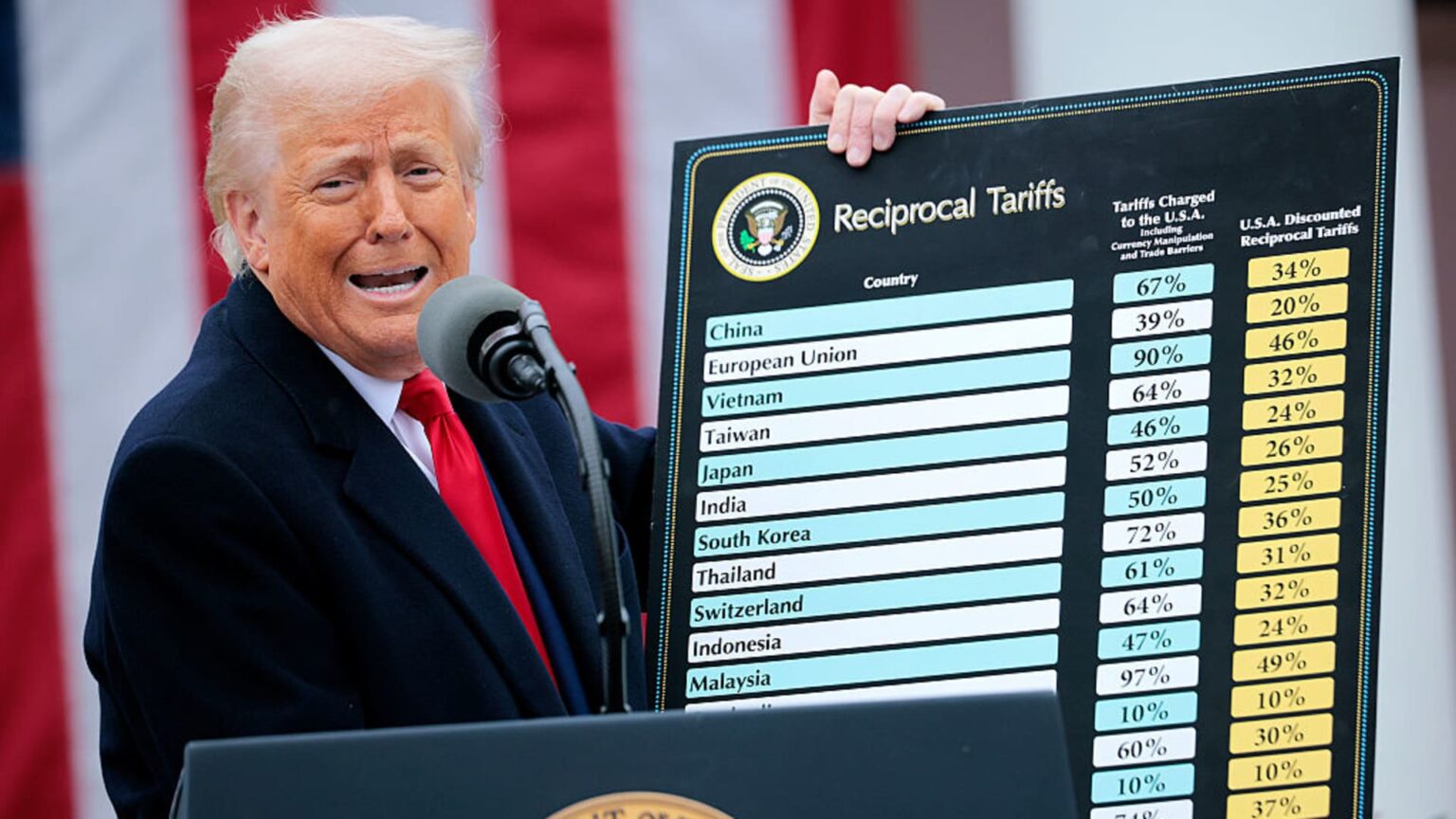On April 2, 2025, U.S. President Donald Trump presents a chart during a speech in Washington, D.C., emphasizing his economic policies.
Chip Somodevilla | Getty Images
Judicial Ruling Challenges Presidential Authority on Tariffs
In a landmark decision on Wednesday, a federal appellate court determined that President Donald Trump overstepped his constitutional powers with his use of reciprocal tariffs, marking a significant setback to his broader economic strategy.
The three-judge panel of the U.S. Court of Appeals for the Federal Circuit concluded that the International Emergency Economic Powers Act (IEEPA) of 1977, which Trump cited to justify the tariffs, does not grant the president unilateral authority to impose such sweeping trade restrictions.
According to the court, “The global and retaliatory tariff orders exceed the scope of authority granted to the President under IEEPA to regulate imports through tariffs.” The judges emphasized that tariffs targeting Canada, Mexico, and China-linked to concerns over drug trafficking-fail to address the specific threats outlined in the original orders.
As a result, the court mandated an immediate and permanent halt to the enforcement of these tariffs and prohibited any future modifications without congressional approval. The Trump administration was given ten days to implement the necessary adjustments to comply with the ruling.
This decision impacts tariffs related to drug trafficking and the so-called “reciprocal” tariffs imposed in April on various countries, which Trump claimed were necessary to correct persistent trade imbalances. Notably, existing tariffs on certain goods like aluminum and steel, which Trump did not invoke IEEPA to justify, remain unaffected by this ruling.
Following the court’s decision, Dow Jones futures surged by 500 points, reflecting investor optimism about the potential easing of trade tensions.
Legal and Political Ramifications
While tariffs on imports generally require congressional approval, Trump bypassed this process by declaring a national emergency under IEEPA, using it as a legal basis to implement tariffs without legislative consent. This approach has been a point of contention, with critics arguing it circumvents constitutional checks and balances.
In response to the ruling, the Trump administration announced its intention to appeal to the U.S. Court of Appeals for the Federal Circuit, seeking to overturn or modify the decision.
White House spokesperson Kush Desai stated, “Foreign countries’ unequal treatment of the United States has fueled our historic trade deficits.” He added, “These deficits have created a national emergency, devastating American communities, leaving workers behind, and weakening our defense industrial base-facts the court did not dispute.”
Desai further argued that it is inappropriate for unelected judges to determine how to address a national emergency, implying that such decisions should rest with the executive branch.
Supporters Celebrate a Win for American Workers
Among the plaintiffs, Oregon State Representative Dan Rayfield hailed the ruling as a victory for working families, small businesses, and everyday Americans. He criticized the tariffs imposed by Trump as “unlawful, reckless, and economically damaging,” noting that they triggered retaliatory measures, increased prices on essential goods, and unfairly burdened American consumers and manufacturers.
Implications for Future Trade Policy and Legal Battles
The legal dispute signals a potential protracted conflict that could ultimately reach the Supreme Court, raising questions about the limits of presidential authority in trade matters. Industry experts suggest that this ruling is a significant blow to the Trump administration’s reliance on IEEPA to impose tariffs at will, especially on countries like China, Mexico, and Canada.
Jack Slagle, founder of NexINT Global, commented, “Even if the Supreme Court overturns this ruling, it doesn’t necessarily mean tariffs will disappear. The trade landscape remains uncertain, and the administration is likely to explore all available options.” He emphasized that the battle over tariffs is far from over, with ongoing negotiations and legal strategies still in play.
The case involved two separate lawsuits: one filed by state attorneys general and another by five American companies heavily dependent on imported goods affected by tariffs. The court found that Trump’s tariff orders were “unlawful” across the board, invalidating the broad scope of his actions.
Trump’s April 2 announcement of sweeping tariffs ranged from 11% to 84% on imports from multiple nations. Although a 90-day pause was issued shortly after, most tariffs remained in effect, including the baseline 10% duties on many products.
One of the court’s key criticisms was the lack of a clear connection between the stated emergency-combating drug trafficking-and the tariffs’ implementation. Trump argued that tariffs on Mexico, Canada, and China were necessary because these countries had not sufficiently intercepted drug traffickers. However, the court found no direct link between these objectives and the tariffs’ use as a tool for enforcement.
Specifically, the judges noted, “Customs’ collection of tariffs on lawful imports does not directly relate to efforts by foreign governments to combat drug trafficking within their jurisdictions.”
Stay tuned for further updates on this developing story.

